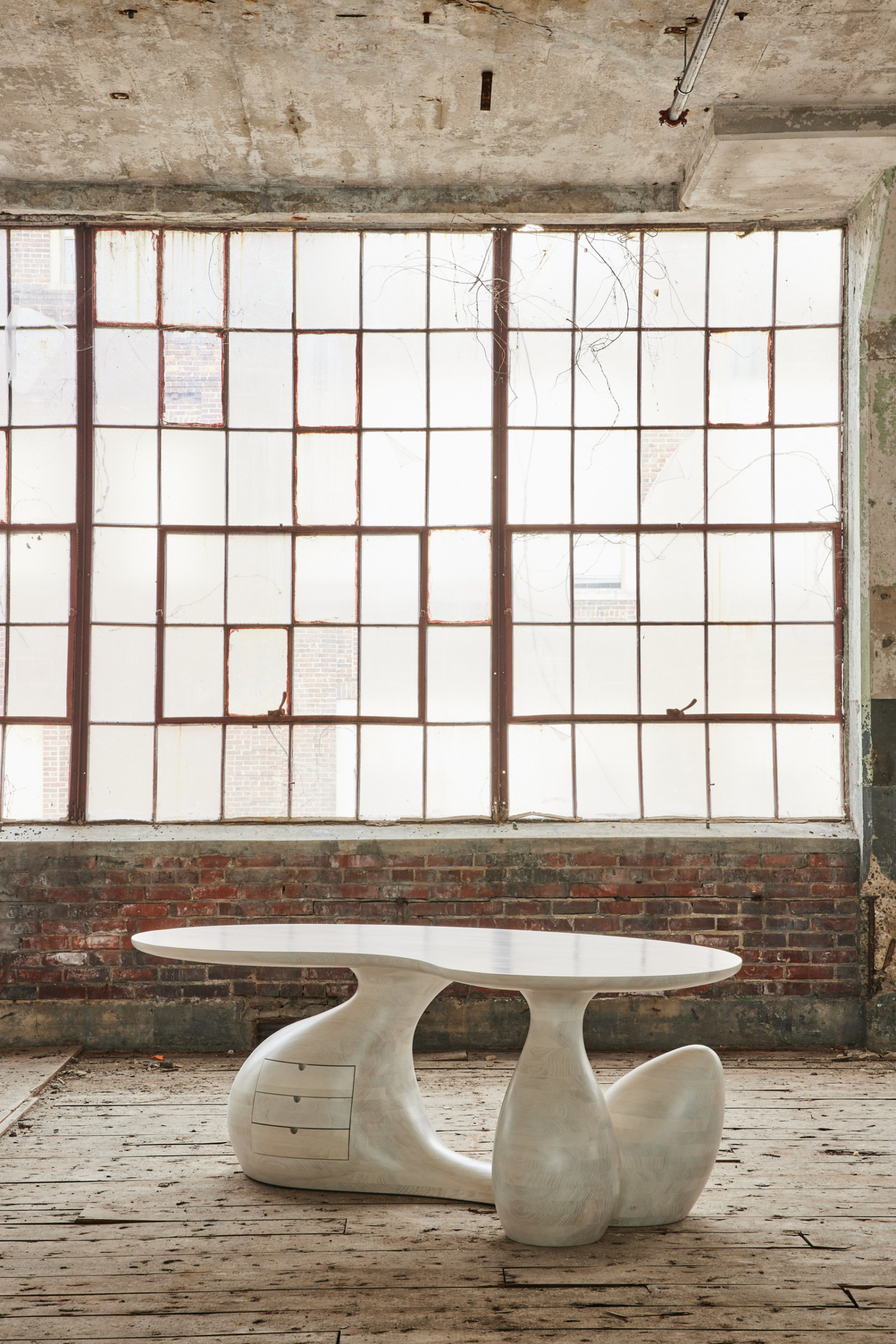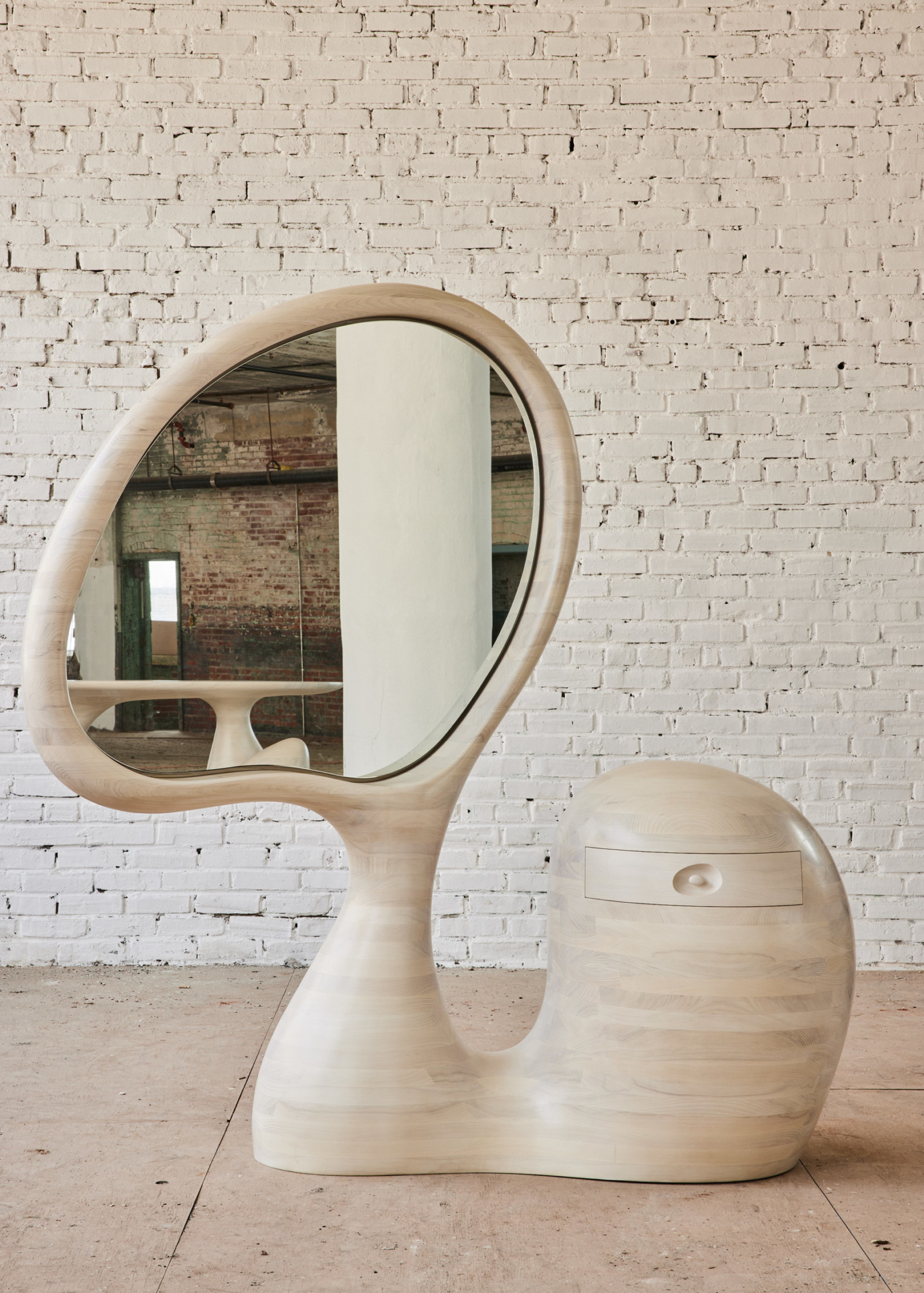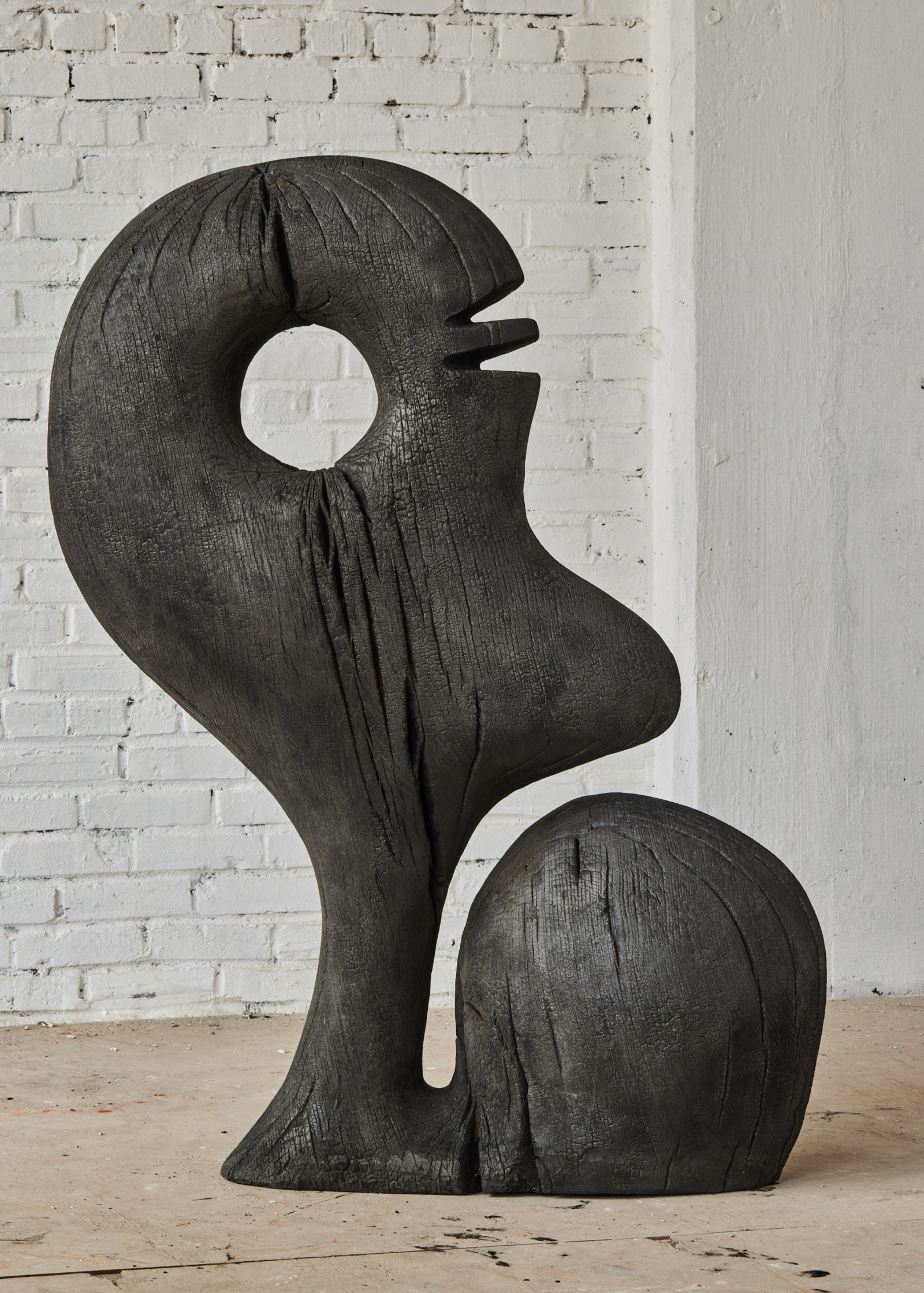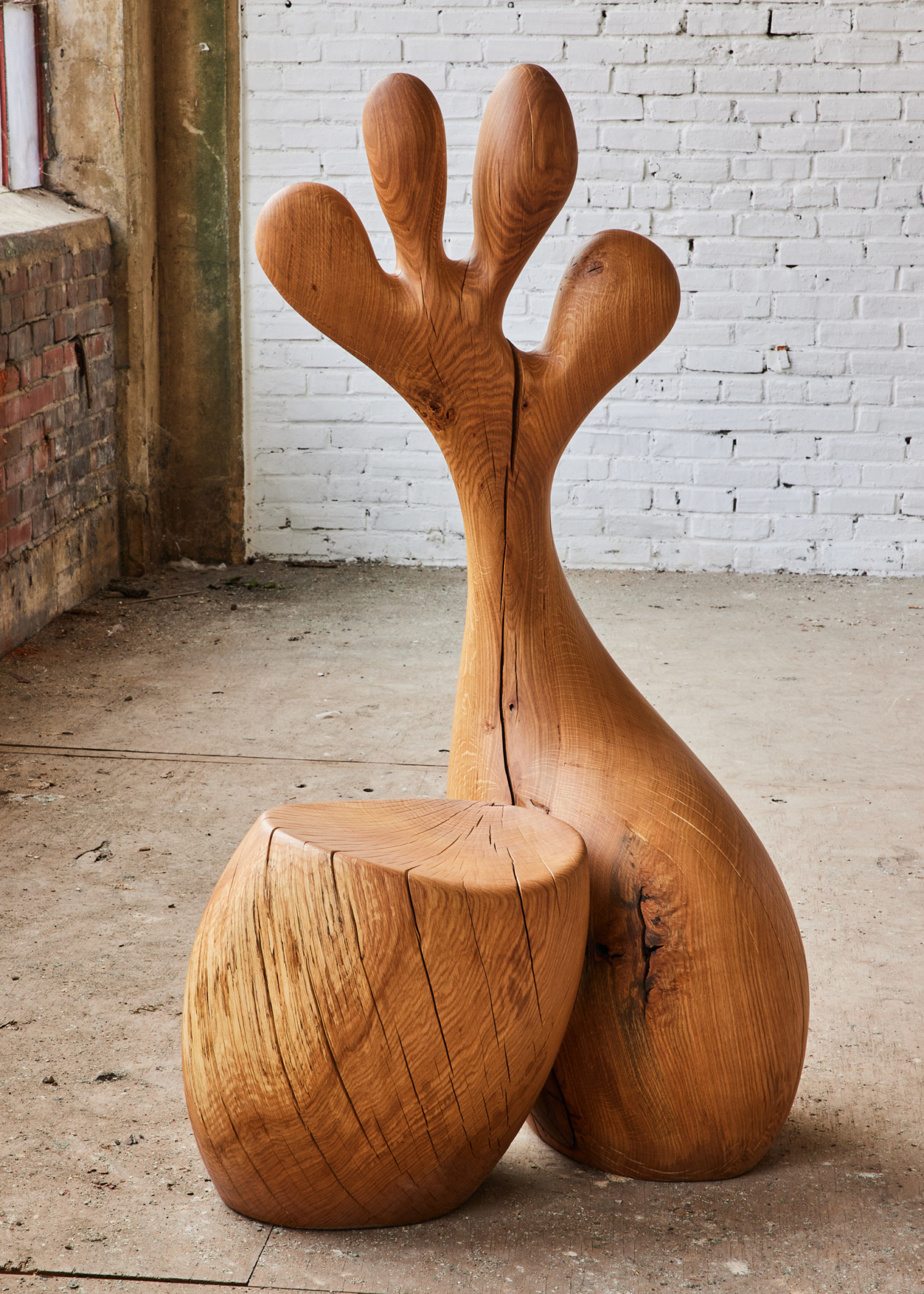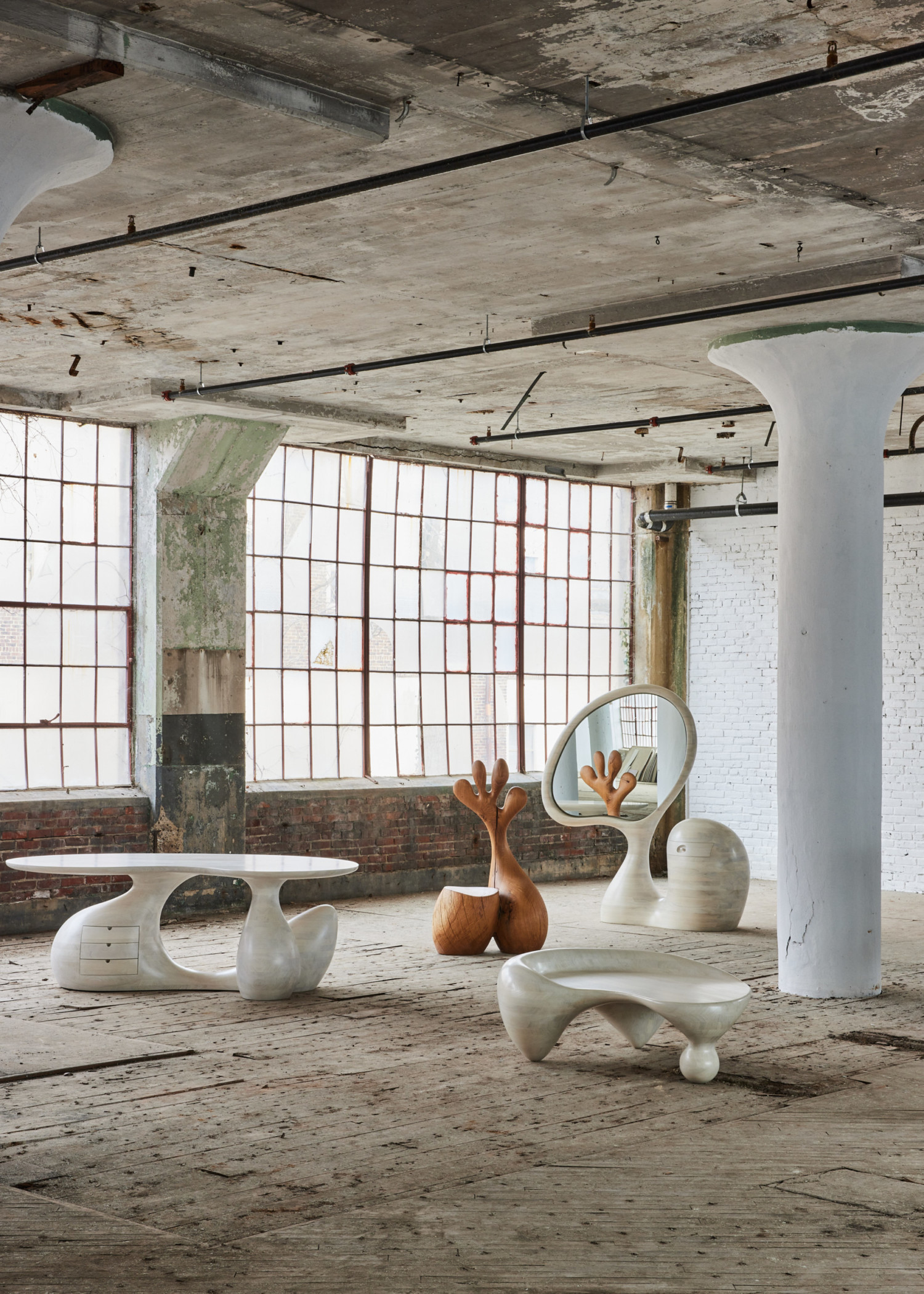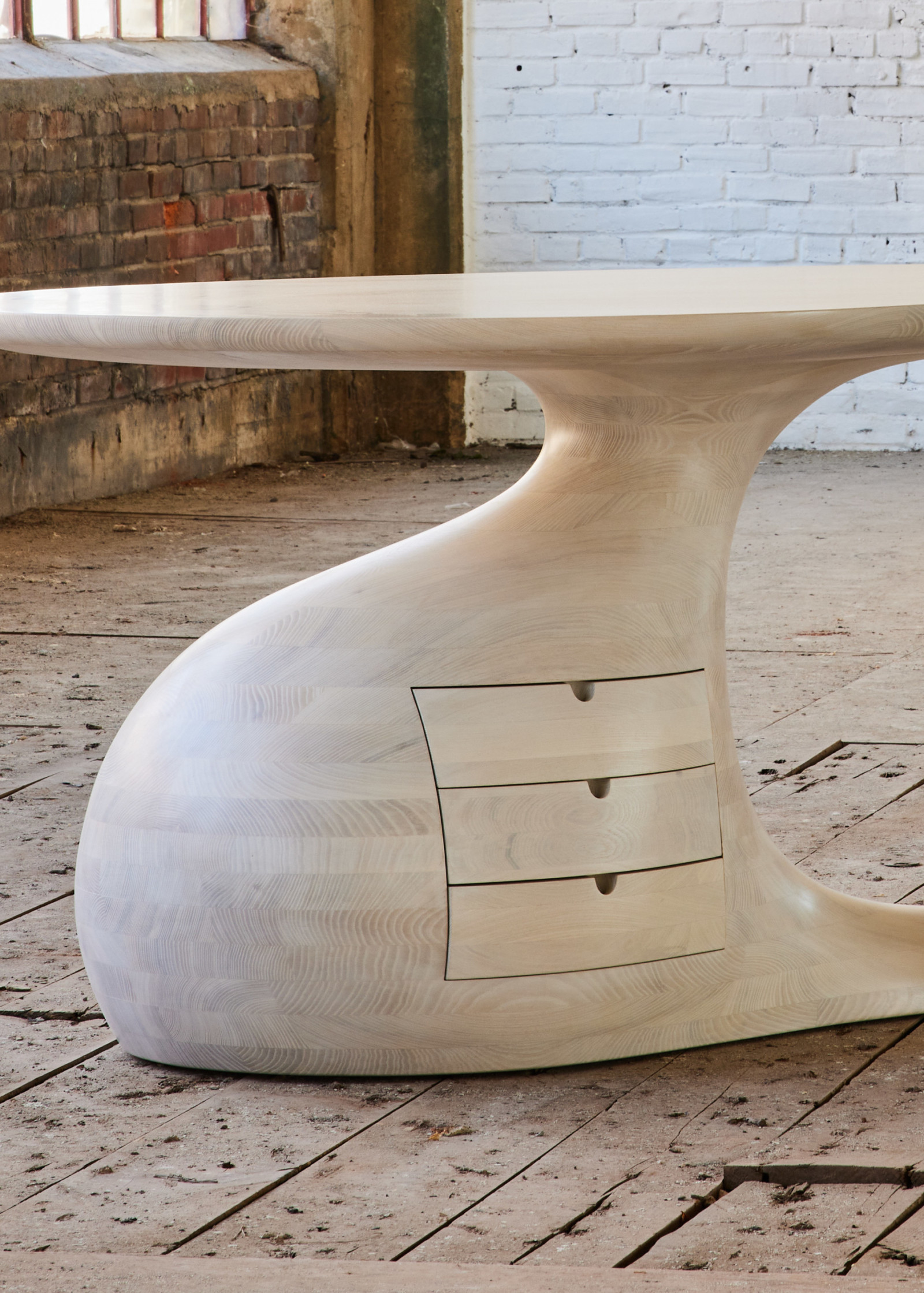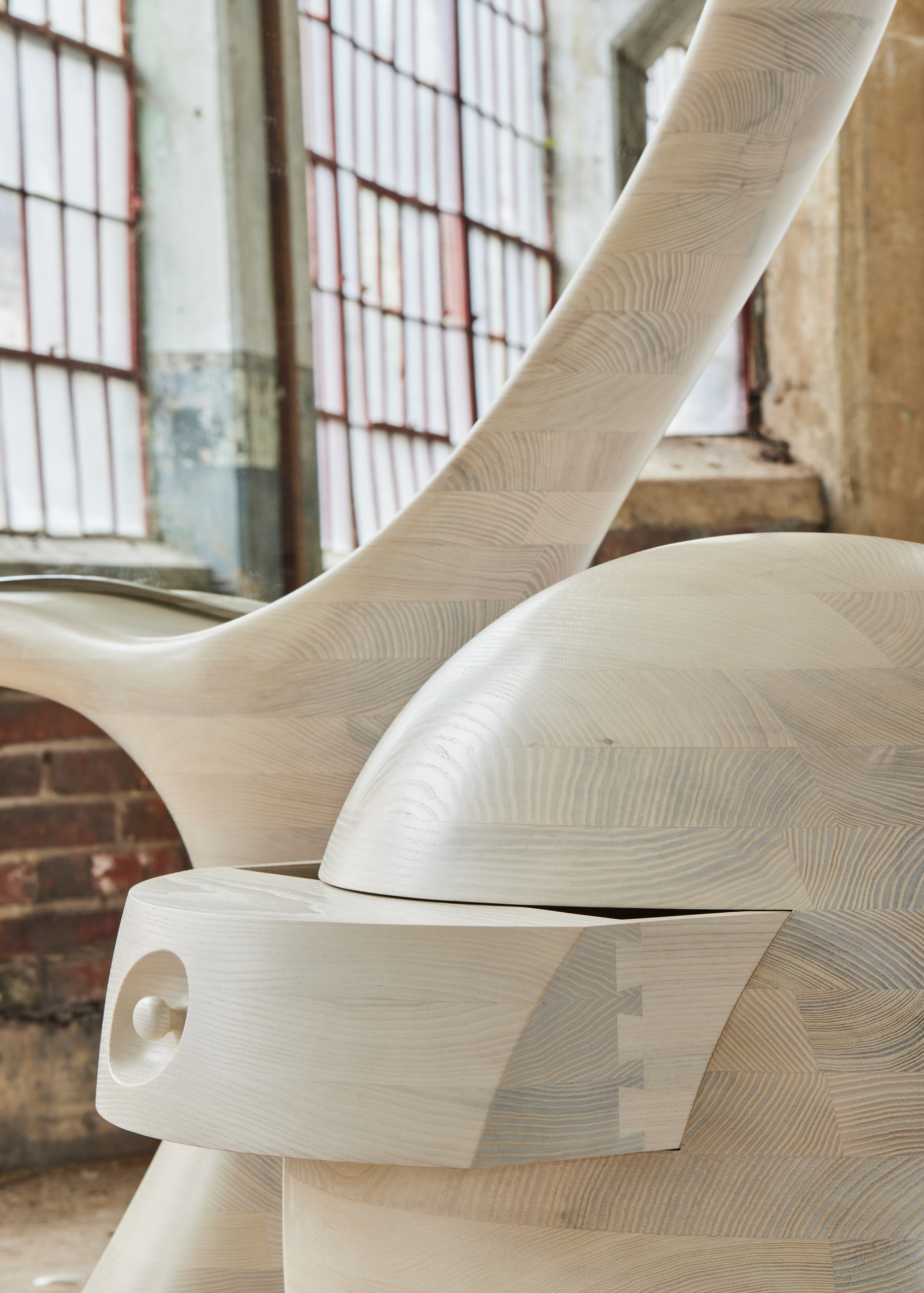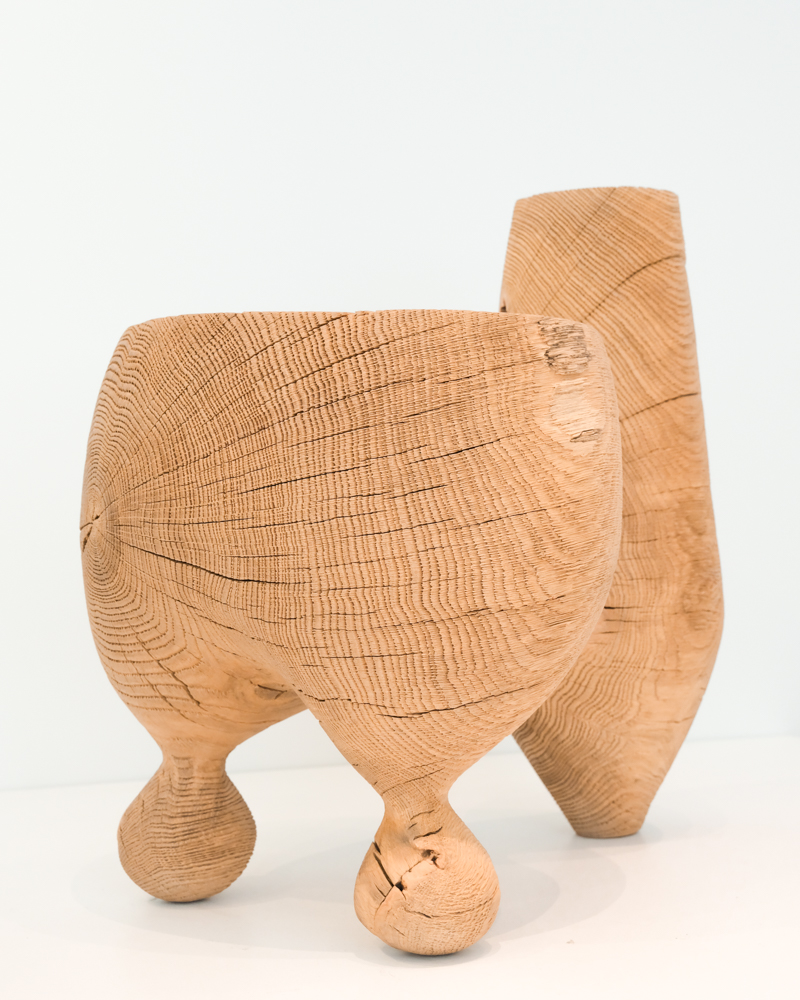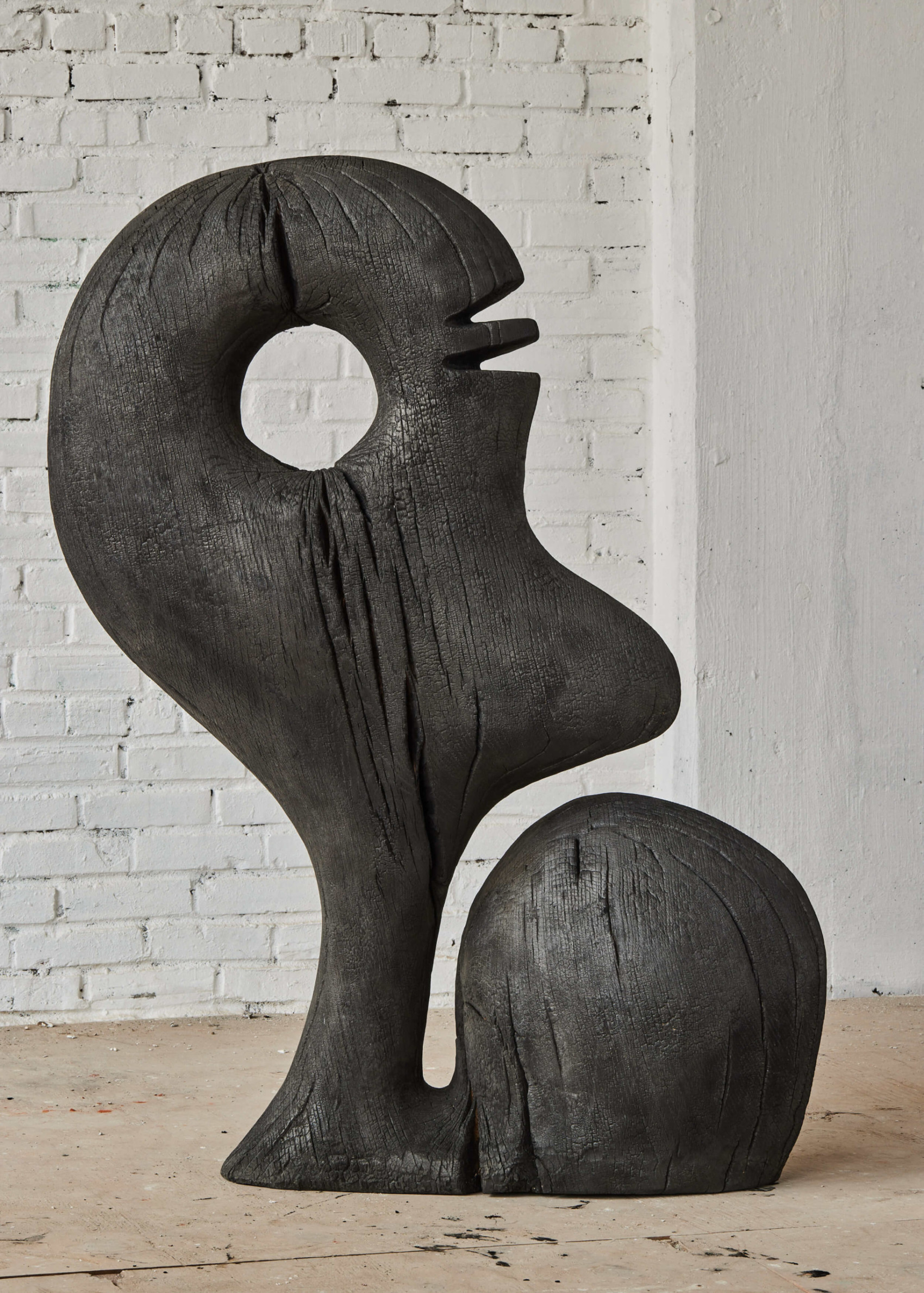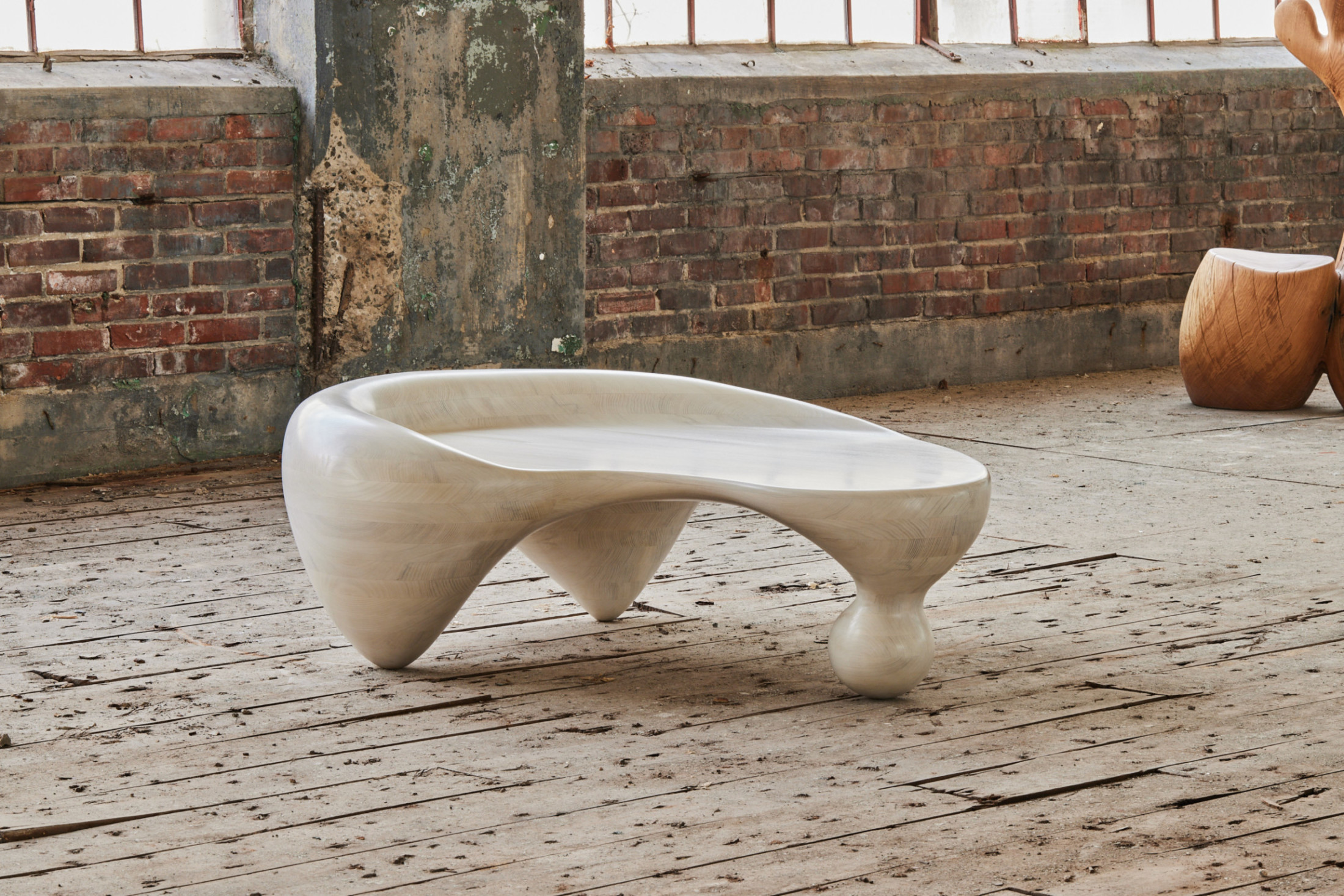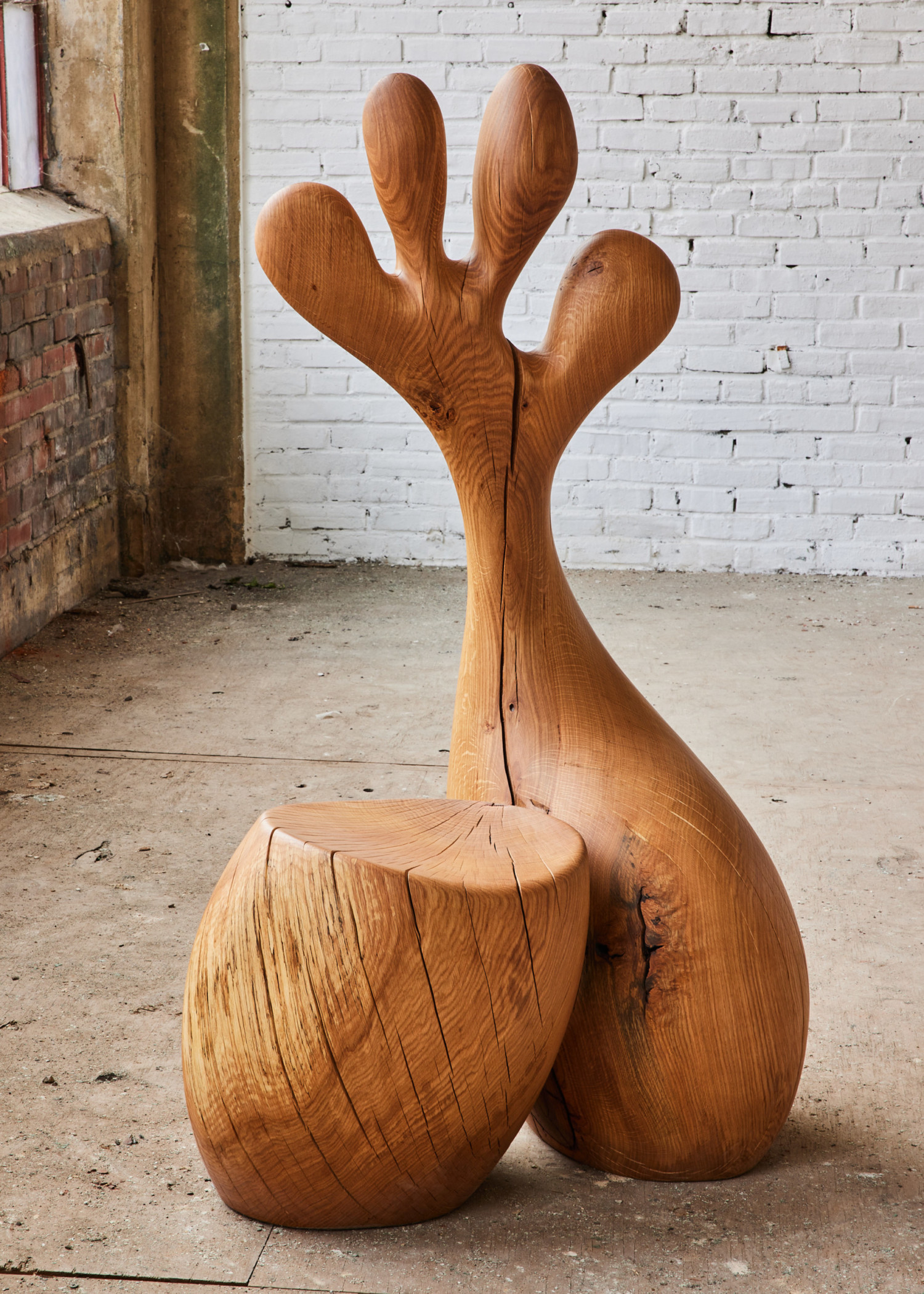The word “terroir” resounds insistent in my head as I contemplate Big Woods, a new collection of wood sculpture from Aaron Poritz. If ever there was a maker informed by the elements of place, it is he. Aaron grew up in Leverett, a small town in the Pioneer Valley of northern Massachusetts, a land of rare wild beauty, with dense forests, rushing rivers, deep valleys, and striking vistas. A solitary boy, nature was his close companion, trees his friends. In a stream in the woods near his house, he used to catch trout and cook them along its banks. In those same woods, he built his first dwelling, a fort, from spruce and hemlock.
As Aaron grew older, he learned woodworking and ceramics. Engaging and creating with the elements of the earth was in his blood. His father, a former professor of sculpture and design, had become an eco-sensitive land developer and a builder of dry-stone walls. While Aaron loved craft, he didn’t see it as a vocation. He was convinced he was better suited to a life in design, so he pursued a career in architecture, that most pragmatic of the arts. After receiving his degree at the California College of the Arts, he made his way to New York City to ply his newly acquired architectural skills in a buzzy boutique firm. But the work didn’t satisfy, and the city made him grim.
An adventurous sojourn in another untamed realm, this time the jungles of Nicaragua, shifted Aaron’s creative focus. He was captivated by the unruly vigor of the landscape, as lush with promise as decay. Some years before his arrival, a fierce hurricane felled vast stands of tremendously tall old-growth trees. Now strewn upon the earth, the rot-bound trunks qualified for legal harvest. Recognizing opportunity amidst the devastation, Aaron set up a furniture business with a local partner, and went about investigating the design potential of such exotic specimens as Nogal, a tropical walnut known for its rich espresso and purple tones, and frijolillo, a dense and heavy blonde wood similar to oak.

